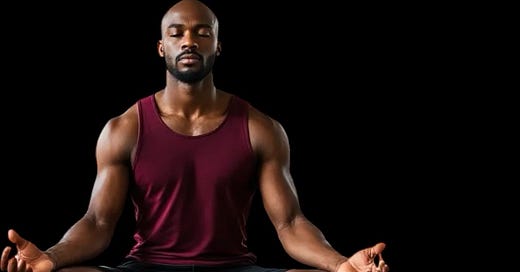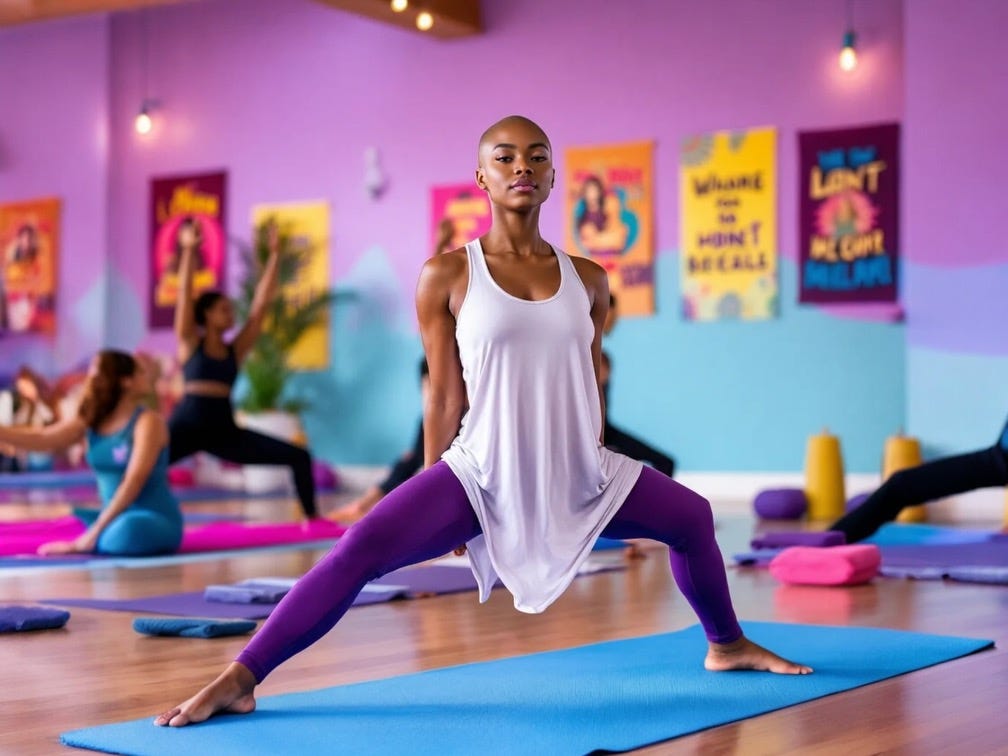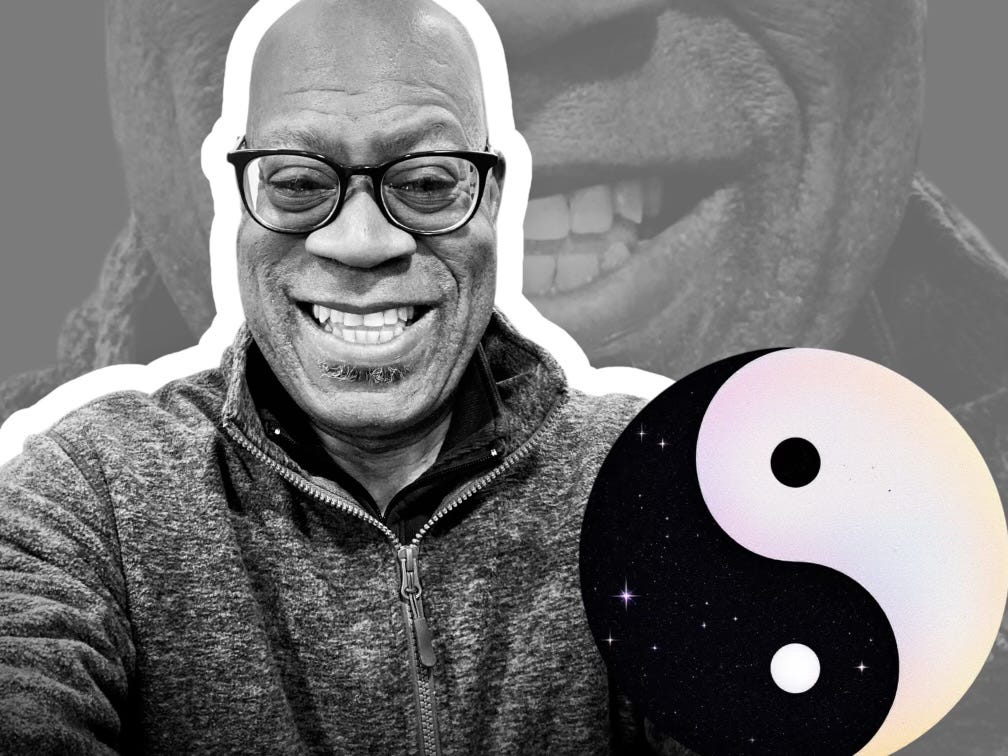Yoga and I have danced together over the years, sometimes deeply entwined, other times as distant acquaintances nodding in passing.
My engagement with the practice has never been linear. Rather, it has moved like the currents of a river—at times a steady, nourishing flow, at others a drought of absence.
Yet, despite my departures, yoga remains a quiet presence in my consciousness, an old friend whose door is always open.
Lately, I have felt a distinct call to return, not out of obligation or nostalgia, but from a deep sense that my body, mind, and spirit are ready for a more intentional reunion.
Perhaps it’s my growing commitment to qigong and Taoist philosophy that has rekindled this awareness—this understanding that yoga, in its essence, is not just about poses but about presence, breath, and the ever-unfolding relationship with oneself.
The Wisdom of Savasana
If there is one pose that has always resonated with me, it is Savasana, the corpse pose. I love the irony of it—the simplest pose, yet often the most profound.
The moment of lying flat on my back, slow and steady breaths, surrendering completely to the moment, has always felt like the truest form of integration. It is here, in stillness, that I feel the lessons of the practice settle into my being, not as intellectual concepts but as lived experience.
Savasana, at its core, is an act of trust. It asks us to let go of effort, to relinquish the need to control, and to simply be. This resonates deeply with my Taoist sensibilities. The Tao teaches that the more we grasp, the more things slip through our fingers.
Savasana teaches the same. It is a moment of non-doing, where everything that needs to unfold does so without force. In a world obsessed with achievement, this final pose reminds me that rest, surrender, and allowing are just as vital as action.
The Intersection of Taoism and Yoga
My Taoist journey has taught me that the most natural state is one of flow—moving in harmony with the rhythm of life rather than against it. Yoga, when practiced with awareness, cultivates this same principle. Both traditions, at their heart, are not about rigid dogma but about cultivating an inner attunement to the way things are.
Taoism speaks of wu wei, the art of effortless action, of moving in accordance with the natural unfolding of things rather than resisting them. Yoga, through its postures and breathwork, invites this same surrender—learning to meet the moment with what is needed rather than what is imposed.
Whether in holding a pose or moving through a sequence, yoga teaches me to listen to my body rather than force it. Just as a river does not push against its banks but carves its path through persistence and ease, yoga encourages the same kind of intuitive adaptation.
Hexagram 43: Breaking Through
Recently, the I Ching presented me with Hexagram 43—a symbol of breakthrough and decisive action. At first, I pondered what kind of breakthrough I was being called toward. But as I sat with it, I realized it was not a breakthrough in the external world but an internal one. The hexagram speaks of shedding what no longer serves me, of stepping into clarity with a firm yet gentle resolve.
This felt strikingly aligned with my growing urge to return to yoga. Not as a performance, not as an item on a wellness checklist, but as a means of deepening my connection to breath, body, and stillness.
Hexagram 43 reminds me that breakthroughs are not always about forceful disruption; sometimes, they come from subtle but intentional shifts. Yoga, like qigong, is not about conquering the self but about creating space for what is essential to emerge.
The Breath as a Bridge
At the core of both yoga and Taoist practice is breath—not just as a biological function but as a spiritual anchor. Pranayama, the art of breath control in yoga, reminds me of this power. It is a way of regulating not only the body but the mind. The Taoist tradition also speaks of the breath as a carrier of qi, our life force, shaping the way energy flows through us.
When I take slow, mindful breaths—whether in meditation, in qigong, or in yoga—I feel the distinction between control and presence dissolve. The breath is always here, yet how often do we truly meet it with awareness?
When I engage in Nadi Shodhana, alternate nostril breathing, I feel my nervous system settle into balance. When I practice Ujjayi, that oceanic breath that sounds like the waves, I feel my mind slow, mirroring the effortless rhythm of nature.
Breath is the bridge between the seen and unseen, between action and surrender. It is a reminder that we are not separate from the greater flow of life—we are it.
Returning to the Mat, Returning to Myself
So here I am, feeling the gentle pull to return—not just to yoga, but to myself. To my breath. To my body as an instrument of wisdom rather than just a vehicle of movement. To the stillness of Savasana, where all effort dissolves into awareness.
Yoga is not something I need to conquer, nor is it something I need to prove. Like the Tao, it simply is—waiting for me to step back into its rhythm whenever I am ready. And right now, I am.
If you find my nomadic wisdom valuable in helping to set a positive tone for your day, would you be kind enough to consider joining as a paid member supporter.
You can also tip me some dirty chai latte love here if you feel so inclined.
Every bit counts as I strive to deliver high quality feature articles into your inbox on a daily basis. Never any paywalls, just my Taoist raw thoughts which are open to everyone on what it means to be human.
Your contributions are appreciated in support of my fall time work and calling.
Much Love,
Diamond- Michael Scott — aka The Chocolate Taoist
PS: Here are a couple of other simple ways you can support me
Reshare your favorite takeaway on Substack NOTES
SHARE this article and publication








Namaste, D-M. I take yoga three days a week at Northside (tue-th at 5, sat at 8:15), and the classes are cheap and good. If you want to restart your practice, pull up a mat in our 'hood and get wu wei with it. Certainly cheaper than joining a private studio. With my old person discounts it's practically free.
I have rolled out of bed onto my yoga mat 5-6 days a week for 25 years. My practice has shifted and changed and evolved a couple dozen times in those years, but the relationship of my body to my breath to my soul is always there. It’s how I remember Self.
My discipline to stay consistent is because of one simple rule. 5 minutes. I commit to a minimum of 5minute 5x a week. And rarely does it ever last only 5minutes. Usually I end up on the mat for 20-45 minutes.